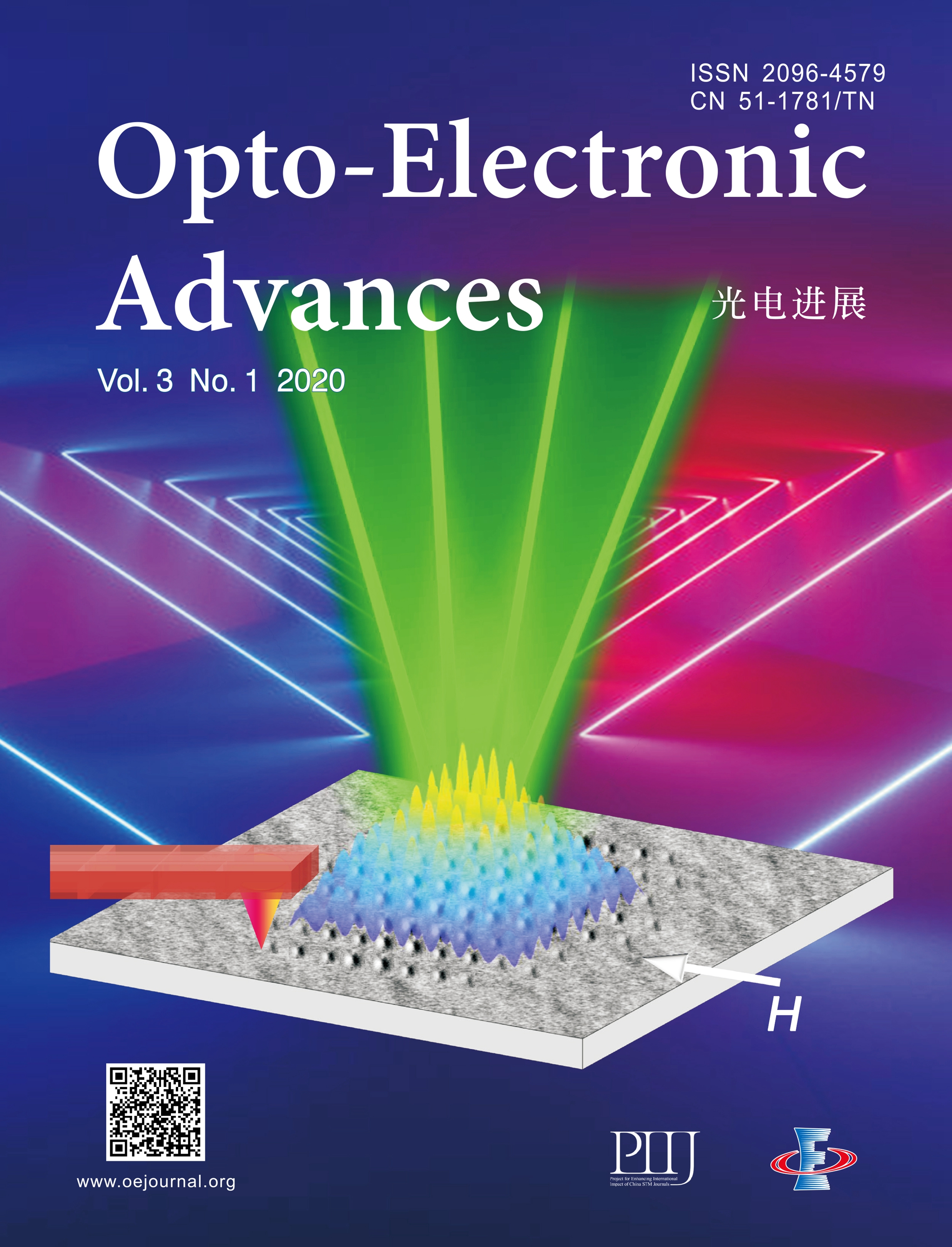2020 Vol. 3, No. 1
Cover Story:Graus P, Möller T B, Leiderer P, Boneberg J, Polushkin N I. Direct laser interference patterning of nonvolatile magnetic nanostructures in Fe60Al40 alloy via disorder-induced ferromagnetism. Opto-Electron Adv 3, 190027 (2020).
In view of phase-change magnetic memory (PCMM), it is challenging to push the features patterned via locally induced order-disorder transformations to smaller and smaller dimensionstowards the superparamagnetic limit. The joint research group of Prof. Johannes Boneberg from University of Konstanz in Germany and of Dr. Nikolay Polushkin from Institute for Physics of Microstructures of Russian Academy of Sciences investigates chemical order-disorder transformations induced by laser at the submicron and nanometer scales. To date, it has been demonstrated that direct laser interference patterning (DLIP) of thin-film (35 nm) Fe60Al40 alloys provides formation of regular magnetic nanostructures with periodicities down to 400 nm. These formed structures are nonvolatile and detectable by magnetic force microscopy at room temperature. It is argued that the observed nanostructures result from locally induced (within interference maxima) chemical disordering in the Fe60Al40 alloy, which occurs at laser fluences below the melting threshold. Further efforts will be focused on finding limitations for dimensions of the patterned features and on studying how to be erased by low-intensity pulses of the same laser which is employed for their writing. The results of this work are believed to provide a developing approach to magnetic recording and data storage in which the information will be encoded in regions where the magnetization modulus differs from that of the surrounding matrix. Such an approach to magnetic recording and information storage would be helpful to overcome the limit for magnetic recording density because of thermal fluctuations of magnetization.

-
{{article.year}}, {{article.volume}}({{article.issue}}): {{article.fpage | processPage:article.lpage:6}}. doi: {{article.doi}}{{article.articleStateNameEn}}, Published online {{article.preferredDate | date:'dd MMMM yyyy'}}, doi: {{article.doi}}{{article.articleStateNameEn}}, Accepted Date {{article.acceptedDate | date:'dd MMMM yyyy'}}CSTR: {{article.cstr}}
-
{{article.year}}, {{article.volume}}({{article.issue}}): {{article.fpage | processPage:article.lpage:6}}. doi: {{article.doi}}{{article.articleStateNameEn}}, Published online {{article.preferredDate | date:'dd MMMM yyyy'}}, doi: {{article.doi}}{{article.articleStateNameEn}}, Accepted Date {{article.acceptedDate | date:'dd MMMM yyyy'}}CSTR: {{article.cstr}}

 E-mail Alert
E-mail Alert RSS
RSS


